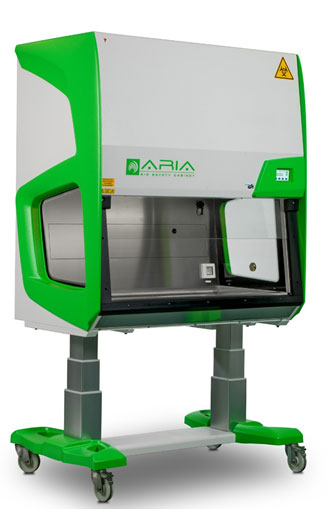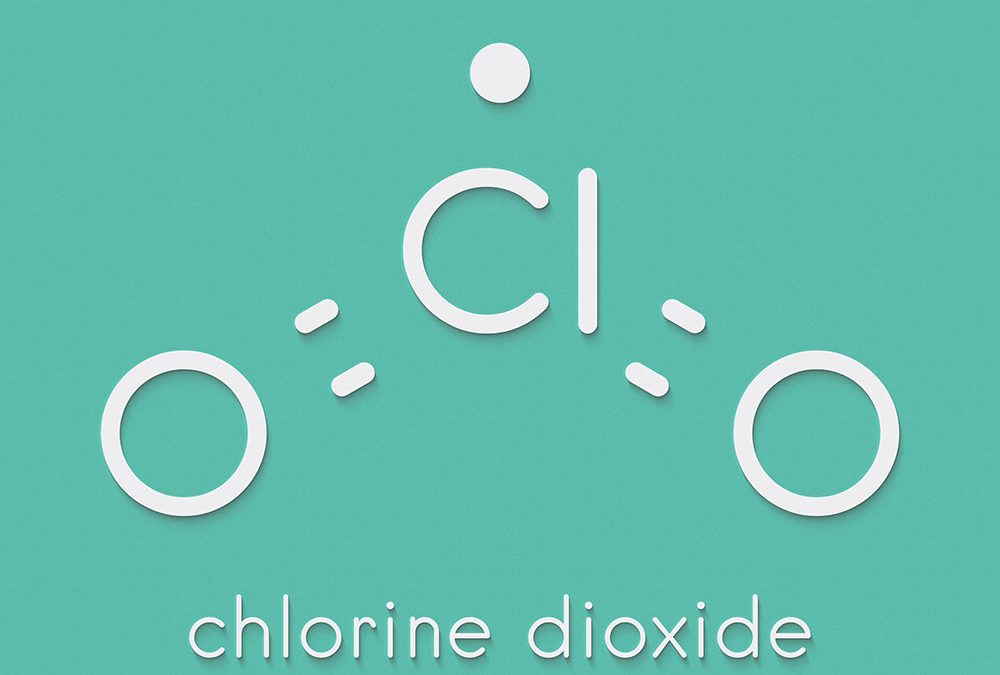The last total decontamination for Biosafety Cabinet (surface + interior parts) in a Gnotobiotic facility , officially reported in the NSF49 standard only, in addition to the formaldehyde fumigation and H2O2 method, is the Chlorine Dioxide gas.
Chlorine dioxide (ClO2) is a synthetic, green-yellowish gas with a chlorine-like, irritating odour. Chlorine dioxide is a small, volatile, and very strong molecule. Chlorine dioxide (CD) is an unstable gas that dissociates into chlorine gas (Cl2), oxygen gas (O2) and heat. This gas penetrates and decontaminates all parts of a targeted volume with the same ease experienced with the traditional formaldehyde procedure.
The Chlorine dioxide does not leave a residue in contrast to formaldehyde and is considered to be non-carcinogenic. Since Chlorine dioxide is a gas at room temperatures, it does not condense on surfaces but, in terms of material compatibility, is highly corrosive and is known to react negatively with steel and plastics. As a gas, it easily flows through HEPAs for complete decontamination. Chlorine dioxide gas can be direct-vented (local laws must be followed) or scrubbed out. Two types of scrubbers are available: a carbon packed scrubber and a sodium thiosulfate counter-current scrubber.
Two validated procedures for fumigation using chlorine dioxide are provided for in the NSF49.

The first method utilizes a fixed amount of Chlorine dioxide gas. It is similar to using formaldehyde, as the volume of the cabinet determines how much Chlorine dioxide gas must be generated. As with formaldehyde, the cabinet must be sealed. Once the cabinet is sealed, the RH is raised to 60%-85%. The cabinet blower or a recirculation system must be running during humidification. Once the RH is at proper levels, the Chlorine dioxide gas can be introduced, either through a front connection plate or by placing the generator inside the Biosafety Cabinet, to reach 0.13 g/ft3 (4.7 g/m3).
The Chlorine dioxide exposure or contact time is 85 minutes. The ducted cabinets can be aerated in 5-10 minutes compared with 20-30 minutes for scrubbers. Using low-level safety sensors ensures the cabinet is below the short-term exposure level (STEL) of 0.3 ppm before removing the cabinet sealing.
The second method utilizes a fixed concentration of chlorine dioxide gas. This method requires the capability of monitoring the concentration and the ability to add more concentration if needed. The Chlorine dioxide gas is generated by passing dilute chlorine gas over sodium chlorite cartridges to reach a specific concentration (3 mg/L [1086 ppm] or 5 mg/L [1810 ppm]) and is maintained throughout the entire exposure time (60 minutes for 3 mg/L; 45 minutes for 5 mg/L). This method requires equipment that is capable of generating the gas on demand, monitoring the gas, and maintaining the gas concentration. The sealing method, RH requirements, and aeration are the same for both the methods.
Recent Articles
- Gnotobiotic facilities: writing inside isolators 4 April 2022
- Germ-free cage sterilization 24 January 2022
- Microbiota and its importance in aging 25 October 2021
- Procedural diversity and technical choices working with gnotobiotic mice in IVCs. (part 2) 27 September 2021
- Procedural diversity and technical choices working with gnotobiotic mice in IVCs. (part 1) 30 August 2021
DVC – Digital Ventilated Cage for digital vivarium

The DVC® is capable to provide novel insights and enhance animal welfare checks thanks to the automatic data collection directly from the cage level. Specifically designed DVC® board enables different benefits for the researchers and vivarium people.


